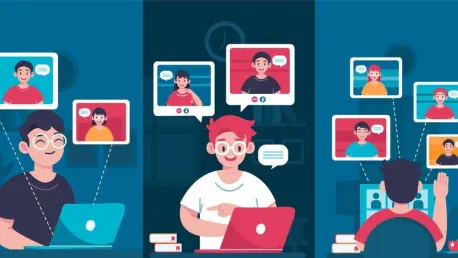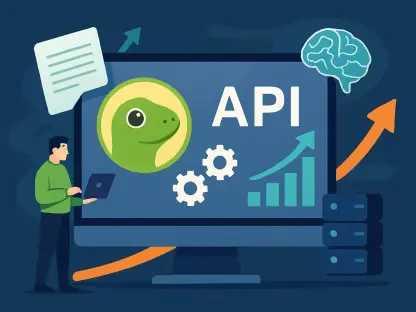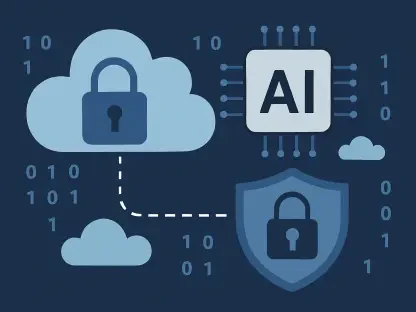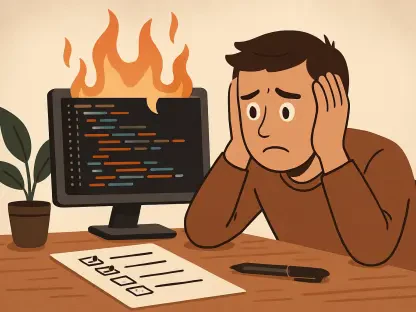The rise of remote work and virtual meetings has made videoconferencing platforms indispensable tools for communication. However, these technologies often pose significant challenges for individuals who stutter. Rather than offering convenience, they can create anxiety and frustration. Shaomei Wu, former tech lead at Meta and founder of AImpower.org, is leading an initiative to make these platforms more inclusive for people with speech diversities. Through a collaborative process, Wu and her team aim to redesign videoconferencing tools to empower users who stutter, enhancing the overall experience for everyone.
Understanding the Challenges
The Impact of Stuttering in Virtual Settings
Stuttering involves repeating or elongating parts of words or experiencing speech blocks. For individuals who stutter, traditional videoconferencing platforms can be an obstacle. These settings often accentuate communication difficulties, making verbal interactions more stressful. From struggling with interruptions to the discomfort of watching their speech patterns replay on screen, those who stutter face unique hurdles that fluent speakers may not even notice. This amplification of challenges can lead to a range of negative consequences, including increased anxiety and a reluctance to participate in virtual meetings. Watching oneself on screen can be particularly disconcerting for people who stutter, as the visual feedback loop can heighten self-consciousness and amplify the perception of one’s speech patterns. Additionally, the fast-paced nature of many virtual meetings makes it difficult for individuals who stutter to assert themselves or regain the floor after being interrupted. The result is often a feeling of being marginalized or overlooked, which can further exacerbate anxiety and reduce the willingness to engage fully in discussions. These compounded difficulties underscore the urgent need for more inclusive videoconferencing solutions that accommodate diverse speech patterns.
Nonverbal Communication Barriers
In face-to-face conversations, people who stutter can use nonverbal cues like eye contact or gestures to signal their intent to speak. However, these cues are less effective in virtual meetings. The lack of physical presence strips away these supportive strategies, leaving individuals more vulnerable to being misunderstood or overlooked. This can lead to feelings of anxiety and isolation, further complicating their participation. The limitations of the current videoconferencing platforms in recognizing and responding to these nonverbal cues make it significantly harder for individuals who stutter to communicate effectively and confidently. Nonverbal communication plays a crucial role in human interactions, and its absence in virtual settings can be particularly detrimental for those who stutter. The inability to convey cues like raised eyebrows, gentle nods, or hand gestures can make it challenging to signal readiness to speak or to indicate that one is still formulating thoughts. This often leads to misinterpretations or interruptions, making the communication process more arduous and frustrating. Consequently, there is a pressing need to integrate features that can replicate these nonverbal cues in virtual meetings, ensuring that individuals who stutter can participate more fully and comfortably.
The Collaborative Approach to Solutions
Co-Designing with the Community
Realizing the gravity of these challenges, Shaomei Wu initiated a research project that would involve the stuttering community directly. Alongside Gilly Leshed from Cornell and Jingjin Li from AImpower.org, Wu employed a co-design methodology. This process not only positions individuals who stutter as users but also as key contributors. Their lived experiences become invaluable data points, driving the creation of more inclusive and effective communication tools. Such an approach ensures that the solutions developed are not just theoretical but grounded in the practical realities of those who navigate these challenges daily. The co-design process entails regular consultations, feedback sessions, and prototyping with the stuttering community. By actively involving those who experience these speech diversities, the team can better understand the nuanced challenges they face and tailor solutions that genuinely meet their needs. This participatory approach is empowering for the participants, providing them with a sense of ownership and validation as their insights and recommendations are incorporated into the design. It also fosters a sense of community and mutual support, as participants come together to share their experiences and collaborate on creating more inclusive technologies.
Empowering Through Inclusion
This collaborative approach shifts the paradigm from designing for people who stutter to designing with them. By integrating their feedback and ideas, the team ensures that the technologies developed are not only user-friendly but also empowering. Participants have expressed that this involvement has been validating, as their needs and preferences are being acknowledged and addressed in meaningful ways. This inclusive design philosophy transforms the development process into a shared journey, where the voices of marginalized communities are central to creating solutions that resonate with their lived experiences. Empowering individuals who stutter through inclusive design also has broader implications for the tech industry. It challenges existing norms and practices, prompting a reevaluation of how technologies can be made more accessible and equitable. This paradigm shift encourages other developers and companies to adopt similar approaches, fostering a culture of inclusivity and respect within the tech landscape. By prioritizing the needs of diverse users, the industry can move towards creating more holistic and human-centered technologies that benefit everyone, irrespective of their speech patterns or communication styles.
Innovative Solutions for Inclusive Videoconferencing
Self-Identification Badge
One prominent idea is the self-identification badge. By allowing individuals to identify themselves as someone who stutters, this feature aims to reduce communication stress. It fosters a more authentic and humane interaction by making it clear to others that pauses or speech blocks are part of their natural speech pattern. This understanding can significantly diminish the likelihood of misunderstandings or negative judgments. The badge serves as a subtle yet powerful tool for creating a more supportive and empathetic virtual meeting environment. The self-identification badge also serves to educate and raise awareness among participants who may not be familiar with stuttering. By normalizing speech diversities, it helps to break down stigma and promotes a culture of acceptance and respect. This feature can have a profound impact on the overall dynamics of virtual meetings, making them more inclusive and comfortable for individuals who stutter. It establishes a foundation for more compassionate and patient communication, encouraging all participants to engage with each other more thoughtfully and considerately.
“I’m Still Speaking” Button
A feature that has garnered widespread support is the “I’m Still Speaking” button. During moments of speech block, this button can signal to other participants that the speaker has not yet finished. This prevents interruptions and allows the conversation to flow more naturally. Interestingly, this tool can also benefit fluent speakers who find themselves needing to regain the floor after being cut off. By offering a clear indicator that someone is still in the middle of expressing their thoughts, this feature can significantly improve the inclusivity and effectiveness of virtual meetings. The “I’m Still Speaking” button embodies the principle of respectful turn-taking, ensuring that everyone has an equal opportunity to contribute without being prematurely interrupted. For individuals who stutter, this can be particularly empowering, as it provides a straightforward mechanism for asserting their presence in the conversation. It also fosters a more patient and considerate meeting culture, where participants are encouraged to listen attentively and wait their turn to speak. This tool can play a crucial role in enhancing the overall quality of communication in virtual settings, fostering a more inclusive and respectful dialogue.
Balancing Technology and Authenticity
Speech Smoothing Audio Technology
Initially, the team considered incorporating speech smoothing audio technology to enhance conversation fluidity. This feature would subtly adjust stuttered speech, making it appear more fluent. However, this idea sparked a debate on preserving the authenticity of diverse speech patterns. While it could be useful in high-stakes scenarios like job interviews, many participants stressed the importance of normalizing stuttering rather than concealing it. The potential benefits of this technology must be weighed against the risk of perpetuating a culture that values fluency over authenticity. The debate around speech smoothing audio technology highlights a fundamental tension between technological enhancement and the preservation of genuine speech patterns. While such technologies can undoubtedly offer practical benefits in certain contexts, they also risk reinforcing the notion that stuttered speech needs to be ‘fixed’ or hidden. This runs counter to the project’s overarching goal of fostering acceptance and respect for speech diversity. Ultimately, the team must navigate this balance carefully, ensuring that any technological interventions align with the core principles of inclusivity and authenticity.
Accurate Transcripts
Another key suggestion was ensuring that meeting transcripts accurately reflect stuttered speech. Traditional transcription tools might ‘smooth out’ the text, stripping away the true nature of a person’s speech. By maintaining the authenticity of these transcripts, the team aims to honor and respect the diversity of speech patterns, fostering a more inclusive communication environment. Accurate transcripts not only preserve the integrity of the speaker’s words but also promote a deeper understanding and appreciation of speech diversities among all participants. Ensuring that transcripts accurately reflect stuttered speech can also serve as an educational tool, raising awareness about the realities of stuttering. By presenting speech patterns as they are, rather than attempting to ‘correct’ them, transcripts can help demystify stuttering and reduce stigma. This approach aligns with the project’s broader goal of normalizing speech diversities and creating a more inclusive and respectful communication culture. Accurate transcription is a powerful way to acknowledge and validate the experiences of individuals who stutter, fostering a greater sense of belonging and acceptance in virtual meetings.
Fostering a Supportive Environment
Cooling Off Period for Interruptions
Some participants suggested implementing a cooling-off period for those who repeatedly interrupt. This automatic mute feature could help balance the dialogue, making it more inclusive. By deterring dominant voices, it ensures that everyone has a fair chance to contribute. This idea aligns well with the project’s goal of creating a supportive and respectful communication space. The cooling-off period can serve as a deterrent against disruptive behavior, promoting a more equitable and balanced discussion. Implementing a cooling-off period for interruptions can significantly enhance the quality of virtual meetings by fostering a more orderly and respectful communication environment. This feature encourages participants to be more mindful of their speaking habits and to give others the opportunity to share their thoughts without fear of being cut off. It also helps to create a more cohesive and collaborative meeting dynamic, where everyone’s voice is valued and respected. By promoting equitable turn-taking, the cooling-off period can contribute to a more inclusive and productive virtual meeting experience for all participants.
Educational Resources
To further enhance understanding and reduce discrimination, the team plans to include educational materials about stuttering. These resources would feature samples of different speech patterns and information on how to interact respectfully with individuals who stutter. Raising awareness through education can build a culture of empathy and respect, making virtual meetings more comfortable for everyone. Educational resources provide valuable insights into the experiences of individuals who stutter, fostering greater understanding and acceptance among all participants. Educational materials can play a crucial role in challenging misconceptions and stereotypes about stuttering. By providing accurate and informative content, these resources can help to demystify stuttering and promote more inclusive attitudes. This educational approach complements the technological innovations, ensuring that the project’s impact extends beyond just the tools and features. By cultivating a more informed and empathetic meeting culture, the team hopes to create virtual spaces where individuals who stutter feel genuinely supported and respected.
Moving Towards a Future of Inclusive Videoconferencing
Empowerment Through Community Involvement
The surge in remote work and the prevalence of virtual meetings have made videoconferencing platforms essential for communication. However, these technologies can present notable challenges for those who stutter, often resulting in increased anxiety and frustration instead of convenience. Recognizing this issue, Shaomei Wu, a former tech lead at Meta and the founder of AImpower.org, is spearheading an initiative to make these platforms more inclusive for individuals with speech diversities. Wu’s vision is to redesign videoconferencing tools to better support users who stutter, ultimately improving the experience for everyone involved. By fostering a collaborative approach, her team aims to create solutions that reduce stress and empower all users, significantly enhancing their ability to communicate effectively. This initiative underscores the broader importance of inclusivity in technology, paving the way for innovations that cater to a diverse range of needs and making virtual communication more accessible for everyone.









